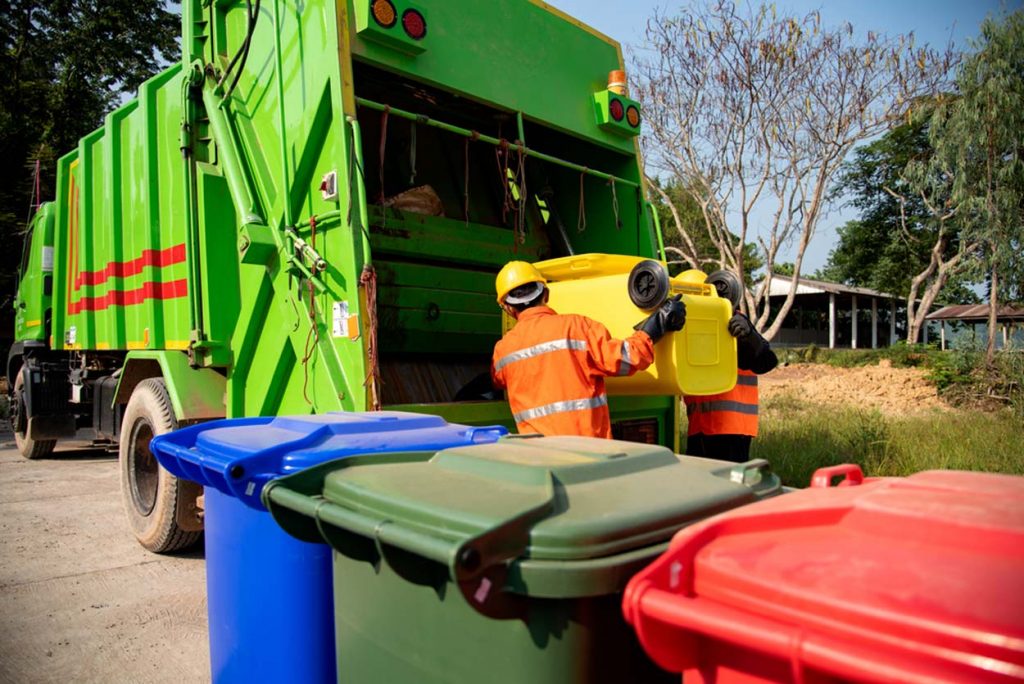
U.S. EPA official Carlton Waterhouse told an audience at the Northeast Recycling Council’s fall conference that social equity is integral to sustainability. | Sirisak Baokaew/Shutterstock
Carlton Waterhouse, a key U.S. EPA waste official, says moving toward a circular economy is not enough. Instead, society needs a “circular economy for all.”
“Sustainability requires social equity,” Waterhouse told recycling industry representatives last week. “If we are going to engage in the work of sustainable resource management, it’s critical we implement circular economy strategies that are inclusive of environmental justice communities.”
Waterhouse was the keynote speaker on the first day of the Northeast Recycling Council’s (NERC) fall conference, being held virtually last week.
Waterhouse is deputy assistant administrator of EPA’s Office of Land & Emergency Management, which includes the agency’s waste and sustainable materials management programs. He has been nominated by President Joe Biden to lead the office.
The nomination of Waterhouse, a law professor with an extensive background in environmental justice work, continues the emphasis EPA is putting on environmental justice under the Biden administration.
More than just pollution burdens
Carlton Waterhouse
During his virtual NERC talk, Waterhouse urged recycling company executives and program officials to expand their thinking about the impacts tied to environmental justice. Typically, he noted, people think of the concept as describing the pollution-related burdens that societal activities like waste processing might have on nearby communities.
But it’s also important to think about the distribution of benefits tied to a recycling program or company. Who is receiving the highest levels of service? Who is receiving the jobs and economic benefits created by materials recovery and reuse?
Equal distribution of benefits, according to Waterhouse, is a critical piece of truly achieving environmental justice, especially as corporate leaders, nongovernmental groups and others continue to envision a future where sustainability leads to profitability.
He said that EPA is currently focused on developing strategies around materials management that will spawn a “circular economy for all.”
How to put that idea into practice? Waterhouse said he’s seen some companies make a concerted effort to connect with a local community before opening a new operation, to better understand how to match employment needs with the skills of nearby residents.
“Some people commit to hiring locally for a certain amount of the opportunities,” Waterhouse said. “It’s a way of thinking about one’s role and status in a community outside of, ‘Well, we’re a for-profit business and we’re here just to make money.'”
He added that state and local government officials can play a key role by flexing the power they hold on land-use decision-making. By developing clear requirements that companies must meet in terms of pollution mitigation, job distribution and more, governments can help a community make real progress on environmental justice.
“If all the conversations are just about the minimum legal requirements, then a real opportunity is being missed to move forward,” Waterhouse said.
Resources at the ready
As environmental justice has become a bigger talking point in the waste and recycling industry in recent years, many industry representatives have been motivated to engage but unsure where to start.
Waterhouse recommended several resources that can help stakeholders understand the scope of the issue and its historical evolution.
First is the EPA’s online Environmental Justice Learning Center, which offers archived webinars, grant details and much more. It has a specific section for state and local governments.
Waterhouse also pointed to the 2017 Richard Rothstein book “The Color of Law,” which helps explain how government policies have led to neighborhood segregation in the U.S. and often put more pollution burden onto communities of color. In addition, Waterhouse recommended the recent work of Charles Lee, a longtime activist who currently advises the EPA’s Office of Environmental Justice.
Company leaders and program officials can also follow a single guiding light when it comes to engaging on environmental justice, Waterhouse said: Bring in the voice of the community. He said that when developing a new site or making changes to how materials are collected and processed, leaders would be wise to hold community meetings, connect with local organizations and find other avenues to meet the local residents on their own terms.
“It’s so important for people that are movers and shakers – the people in the process of making decisions at the private and government level – to make sure that community involvement is happening,” said Waterhouse. “Make sure people have an opportunity to be involved in the decision-making process and [are] informed about how they can play a role.”
A version of this story appeared in Plastics Recycling Update on Oct. 13.
More stories about Industry groups